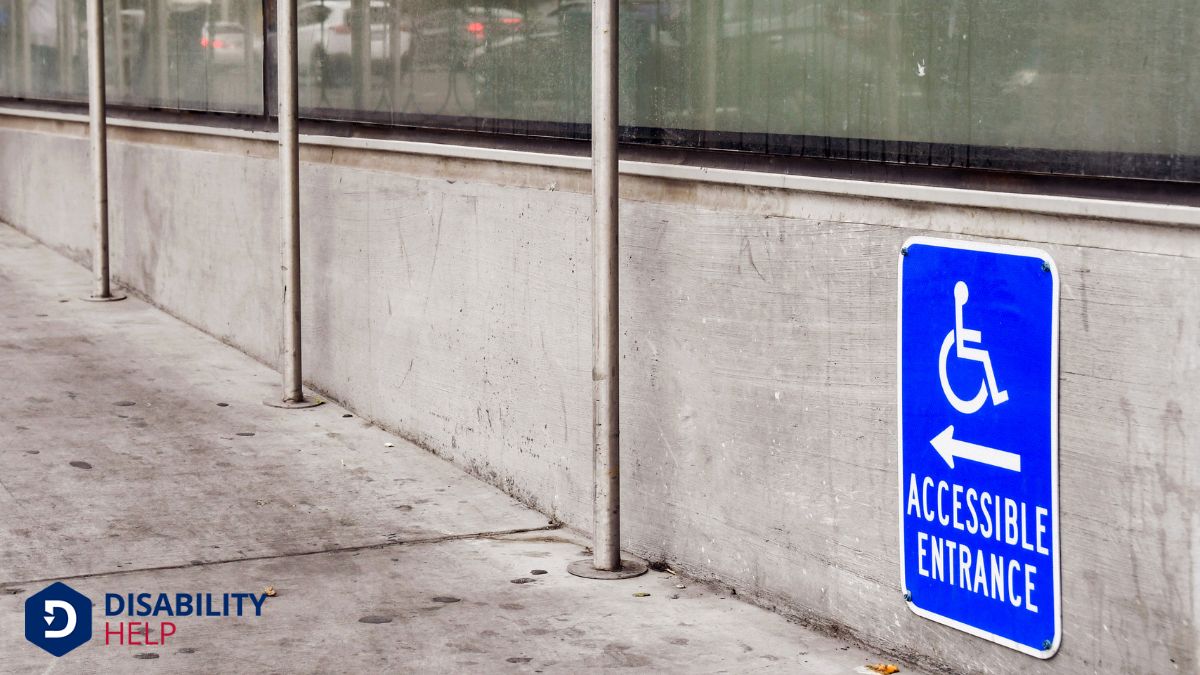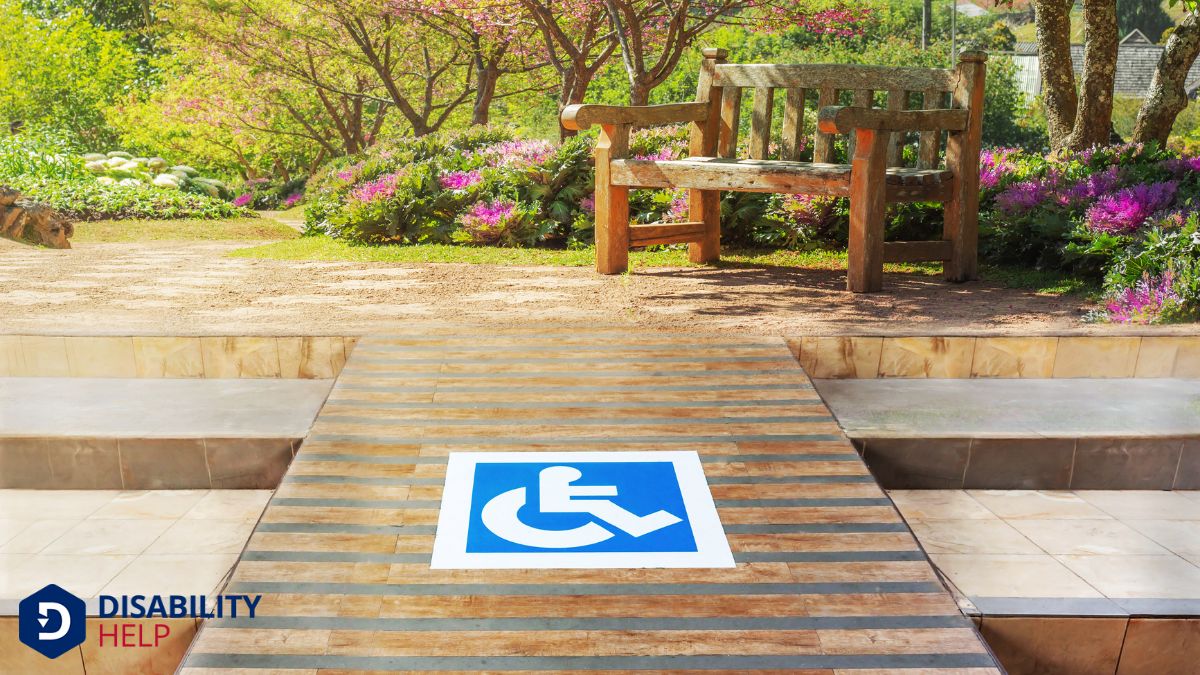When we're planning to make spaces more accessible, understanding how far an ADA ramp can extend without a landing is vital. The guidelines might seem straightforward, but they're essential for guaranteeing safety and ease of use. Ramps can't be too long without a break, but how do we determine the right length? Let's explore the details that guarantee compliance and provide a safe, user-friendly environment for everyone.
Key Takeaways
- An ADA ramp cannot exceed a 30-foot run without a landing.
- Landings must be level and at least 60 inches long and as wide as the ramp.
- Ramps must have a maximum slope of 1:12 to comply.
- A landing is required if the ramp rise exceeds 30 inches.
- Proper landing placement ensures safety and accessibilityThe design of products, devices, services, or environments to be usable by people with disabilities.... for wheelchair users.
Understanding ADA Ramp Requirements

Maneuvering the intricacies of ADA ramp requirements can seem intimidating, but understanding the key principles makes it manageable.
We need to guarantee that ramps are safe and accessible for everyone. The ADA guidelines outline specific criteria, like the maximum slope of 1:12, meaning for every inch of rise, there should be at least 12 inches of ramp run. This guarantees ease of use for individuals with mobility aidsDevices designed to help individuals move around more easily, such as canes, walkers, or wheelchairs....
Ramps also need a minimum width of 36 inches to accommodate wheelchairs comfortably. Additionally, handrails are essential for ramps that rise more than 6 inches, providing stability and support.
Importance of Ramp Length Regulations
Let's talk about why ramp length regulations are essential.
They guarantee accessibility standards are met, allowing everyone to navigate spaces comfortably.
Ensuring Accessibility Standards
When we consider the importance of ramp length regulations, it becomes clear that ensuring accessibility standards isn't just about compliance—it's about fostering inclusivity and safety for everyone.
By adhering to these regulations, we create spaces that are welcoming and usable for people of all abilities. It's vital that we recognize how ramp length directly impacts accessibility. If a ramp is too long without a proper landing, it can become challenging for users to navigate, especially for those with mobility aids.
We must remember that these standards aren't arbitrary; they're carefully designed to eliminate barriers.
By prioritizing accessibility, we're not just meeting a requirement but also valuing the dignity and independence of every individual.
Let's commit to making environments accessible for all.
Promoting User Safety
Understanding ramp length regulations is vital for promoting user safety.
When we think about accessibility, it’s important to take into account the physical demands placed on individuals using ramps. Regulations guarantee that ramps aren’t too steep or long, reducing the risk of accidents.
These guidelines are designed to accommodate various users, including those with mobility aids, making certain everyone can move safely and independently.
Preventing Ramp Fatigue
While traversing ramps, it's essential we consider how ramp length directly affects user fatigue. Longer ramps can exhaust users, particularly those with mobility challenges. That's why regulations limit how far a ramp can extend before requiring a landing. By adhering to these guidelines, we guarantee that everyone, regardless of physical ability, can navigate spaces with ease.
Ramp fatigue isn't just about physical exhaustion; it can also impact a person's confidence and willingness to use a ramp. When we design with appropriate breaks, we promote inclusivity and accessibility.
Landings offer necessary rest, allowing users to pause and regain energy. By understanding the importance of these regulations, we're not just meeting a standard—we're fostering a welcoming environment for all individuals.
Maximum Ramp Run Specifications
Let's explore how ADA regulations guide us on maximum ramp run specifications.
We'll break down the length limits, slope, and gradient standards to guarantee compliance and safety.
Understanding these specifications helps us create ramps that are accessible and user-friendly without compromising on the necessary landing requirements.
ADA Ramp Length Limits
When designing accessible environments, we must adhere to specific guidelines set by the Americans with Disabilities Act (ADA)A U.S. law that prohibits discrimination against individuals with disabilities in all areas of publi... regarding ramp construction.
One significant aspect is understanding the length limits for ramps without a landing. The ADA specifies that a ramp run can’t exceed 30 feet in length between landings. This guarantees the safety and comfort of individuals using wheelchairs or other mobility devices.
Exceeding this limit can make a ramp difficult to navigate, especially for those with limited strength or stamina. By adhering to these specifications, we create spaces that aren't only compliant but also genuinely accessible.
It’s vital for us to carefully plan and calculate the ramp’s dimensions to confirm it meets these requirements while serving its intended purpose.
Slope and Gradient Standards
To guarantee accessibility, the ADA provides clear guidelines for slope and gradient standards in ramp construction. These standards help us ascertain that ramps are safe and usable for everyone, especially those with mobility challenges.
The maximum slope for an ADA-compliant ramp is 1:12, which means for every inch of rise, there should be at least 12 inches of ramp run. This translates to an 8.33% gradient, which is the steepest allowable incline.
We must also ascertain that ramps don't exceed a rise of 30 inches without a landing, as this affects ease and safety. By adhering to these specifications, we can create ramps that aren't only functional but also inclusive.
Let's commit to understanding and implementing these standards for the benefit of all.
Landing Requirements Overview
While understanding slope and gradient standards is essential, we should also focus on the landing requirements that guarantee a ramp's usability.
Landings are vital for safety and comfort, providing users with a space to rest and adjust their mobility devices. According to ADA guidelines, ramps must have level landings at the top and bottom. Each landing should be at least 60 inches long and as wide as the ramp itself.
Additionally, if a ramp run exceeds a rise of 30 inches, a landing is required to break the incline. This guarantees users aren't overexerted and have a safe, flat area to pause.
Properly designed landings are integral to creating a seamless and accessible experience for everyone using the ramp.
Landing Requirements and Exceptions
Understanding landing requirements and exceptions for ADA ramps is essential for guaranteeing accessibility and compliance with regulations.
We must guarantee that every ramp has a level landing at the top and bottom to provide a safe shift for all users. Typically, landings must be at least 60 inches long, providing adequate space for turning or resting.
However, there are exceptions. For instance, when a ramp changes direction, a landing must be present, but it can be adapted to fit the specific layout of the building or space.
Also, in some limited spaces, slightly modified dimensions may be permissible if they don't compromise safety.
Slope and Rise Considerations
When designing ADA-compliant ramps, we must carefully consider both the slope and rise to guarantee accessibility and safety.
The ADA guidelines specify that the maximum slope for a ramp is 1:12, meaning for every inch of rise, there should be at least 12 inches of ramp run. This slope assures that wheelchair users can navigate the ramp without excessive effort. A steeper slope could pose difficulties and risks, especially in wet or icy conditions.
Additionally, the maximum rise for any single ramp run shouldn’t exceed 30 inches. By adhering to these guidelines, we create an environment that’s inclusive and easy to navigate.
It’s essential to keep these measurements in mind to confirm our ramps serve everyone effectively.
Safety Implications of Ramp Design
Guaranteeing the safety of ADA ramp designs is fundamental since any oversight can lead to hazardous situations for users.
We must prioritize user safety by adhering to standards that prevent accidents. Key safety considerations include:
- Proper Slope and Rise: A gentle slope guarantees that users can navigate the ramp without excessive effort, minimizing the risk of falls.
- Handrails: These provide essential support, especially for individuals with mobility challenges, offering stability and confidence when using the ramp.
- Non-slip Surfaces: Confirming the ramp surface is slip-resistant is critical to prevent slipping, especially in wet conditions.
- Adequate Width: A ramp must be wide enough to accommodate wheelchairs or other mobility devices, guaranteeing safe passage for all users.
Materials and Construction Best Practices
Selecting the right materials and employing best construction practices are vital steps in building safe and durable ADA ramps. When we choose materials, we should prioritize durability and slip resistance. Concrete and aluminum are popular choices due to their strength and low maintenance.
Wooden ramps can work but require treatments to prevent rot and guarantee traction.
Construction practices greatly impact a ramp's effectiveness. We must confirm the slope is gentle and complies with ADA guidelines to provide ease of access. It's essential to reinforce the structure, especially in areas with harsh weather conditions.
Common Misconceptions in Ramp Design
While selecting the right materials and construction practices forms the backbone of effective ramp design, misconceptions about ramp requirements can lead us astray.
We've noticed several common misunderstandings that can impact accessibility and compliance. Let’s clear them up:
- Ramp Length: Some believe ramps can extend indefinitely without interruptions, but ADA guidelines require landings after every 30 feet.
- Slope Ratio: There’s a misconception that steeper ramps save space. However, the required 1:12 slope ratio guarantees safety and usability.
- Handrails: Not every ramp is thought to need handrails, but those with a rise greater than 6 inches do.
- Surface Type: People might assume any non-slip material works, but materials should also be durable and suitable for all weather conditions.
Understanding these misconceptions helps us craft better, compliant ramps.
Ensuring Compliance and Accessibility

To guarantee ramps are both compliant and accessible, we must diligently adhere to ADA guidelines while also considering the diverse needs of users.
Understanding slope, width, and landings is essential. A ramp's slope mustn't exceed 1:12, ensuring it's not too steep for wheelchairs or those with mobility challenges.
Landings, required at the top and bottom, offer resting spaces and must be at least as wide as the ramp. They’re vital for safety and ease of navigation.
Handrails, extending beyond the ramp's end, add support and security.
Let’s prioritize clear signage and well-lit pathways to enhance usability.
Conclusion
In designing ADA-compliant ramps, let's focus on ensuring accessibility and safety for everyone. We've learned that adhering to maximum ramp run specifications and incorporating landings when needed is vital. By considering slope, rise, and material selection, we can create ramps that are both functional and user-friendly. It’s important to dispel common misconceptions and prioritize compliance, ensuring our spaces are navigable for all. Together, we can build environments that truly accommodate the needs of every individual.






